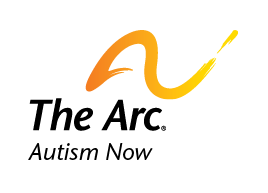Research on Aging with Autism Spectrum Disorders: Issues and Progress
Contents
- Introduction
- Selected Characteristics of Individuals Diagnosed with ASD in Adulthood
- Aging with ASD Research Needs
- References
Introduction
Over the years, diagnosis and treatment of autism spectrum disorders (ASD) have changed dramatically. Young people diagnosed today can look forward to aging more successfully than those in past generations. Earlier diagnosis, early intervention services, more targeted educational programs, and better information and support will likely have a significant impact on aging outcomes (Happe & Charleton 2011). Existing research on adults aging with ASD has several limitations. First, the changes in services for those with ASD makes it difficult to compare the experiences of those from previous generations as they aged with ASD to those being diagnosed today. In addition, the diagnostic criteria have changed over time, ultimately increasing the characteristics associated with a diagnosis of ASD. Those who were diagnosed with ASD in previous eras were predominantly very serious cases. This makes it difficult to apply the aging outcomes of those individuals to people being diagnosed in childhood today (Happe & Charleton 2011). Finally, the largest bulk of research on ASD focuses on children and adolescents, with very few studies focusing specifically on adults, older adults, or on longitudinal data (Piven & Rabins 2011).
In a review of articles focusing on aging and ASD, Happe and Charleton (2011) found that three types of studies: case studies, discussion-driven papers, and empirical studies. Some of the research indicated that the prognosis for older adults with ASD was not particularly positive. In these cases, social and communication impairments tended to continue throughout adulthood, though they were at times reported to decrease in severity. Few were reported to live independently; however, this was most strongly tied to intellectual level. Individuals diagnosed with Asperger Syndrome (AS) in childhood showed better outcomes than autism in adulthood, though this may also be a function of intellectual or verbal ability. There was no indication of higher levels of criminal behavior in comparison with the general population in these studies. However, much of this information is based on research focusing on individuals diagnosed in the 1950’s to the 1970’s during which time different diagnostic criteria were used (Happe & Charleton 2011).
One study that focused on 120 individuals who were diagnosed in adulthood, using modern diagnostic criteria showed more positive outcomes. A significant percentage of these individuals lived independently and showed relatively high educational attainment. Additional mental health diagnoses were also prevalent in this group (Hofvander et al., 2009, reviewed in Happe & Charleton 2011). Some of these findings are outlined in Table 1.
Table 1. Selected Characteristics of Individuals Diagnosed with ASD in Adulthood
| Characteristic | Percentage |
|---|---|
| Living independently | 50% |
| College degree | 25% |
| Employed or studying | 43% |
| Psychiatric disorders | |
| Mood disorders | 53% |
| Anxiety | 50% |
| Attention-deficit/Hyperactivity | 43% |
| Dyslexia | 14% |
| Eating disorder | 5% |
| Catatonia | 6% |
(Hofvander et al., 2009)
Some studies suggested that there were general improvements in many symptom areas, and that individuals became more similar to control groups with age. Some sensory abnormalities seemed to have the potential to improve with age, but it is still unknown whether or not this continues as general age-related declines in these areas increase. While many studies found that social isolation and loneliness can have a negative effect on quality of life in typically developing adults, it is unclear whether this is true of adults with ASD. Some have theorized that for the adult with ASD, isolation may exist without loneliness. It is unclear if that makes a difference in the quality of life outcomes associated with isolation.
Piven and Rabins (2011) focused on the gaps in the existing literature on aging with ASD and recommended topics requiring more research. Most pressing is a need for research that focuses on adults and older adults with ASD. Currently most of the available research focuses on children and adolescents with ASD, though some new research also focuses on young adults. It is unknown whether or not interventions that are similar to those used with younger individuals would be equally effective with adults. Piven and Rabins (2011) also noted that little research focuses on the effect of loss of support networks (siblings, parents, and other family members) on individuals aging with ASD. They suggest that current care models may not meet the unique needs of this group. Figure 1 outlines the most pressing research needs discussed by Piven and Rabins (2011).
Figure 1. Aging with ASD Research Needs
- Development of diagnostic tools to diagnose and assess the needs of adults with ASD
- Descriptive studies that exploreCurrent symptoms,current behaviors,neuropsychiatric features, andassociated medical conditions
- Descriptions of available service and support networks
- Longitudinal studies of life span trajectories
- Studies of interaction between aging, disease, and symptoms
- Intervention studiess with adults with ASD
- Modelss to support training in research on aging in ASD
Given the scarcity of research focusing specifically on adults aging with ASD, more research is a necessity. Existing research suggests that ASD may have different effects and be associated with different experiences for adults than for children and adolescents. New approaches and diagnostic criteria also make it important to revisit previous findings as well.
References
- Happe, Francesca and Rebecca Charlton. 2011. Aging in Autism Spectrum Disorders: A Mini-Review. Gerontology 58: 70-78.
- Hofvander, Bjorn, Richard Delorme, Pauline Chaste, Agneta Nyden, Elisabet Wentz, Ola Stahlberg, Evelyn Herbrecht, Astrid Stopin, Henrik Anckarsater, Christopher Gillberg, Maria Rastam, & Marion Leboyer. 2009. Psychiatric and Psychological Problems in Adults with Normal-Intelligence Autism Spectrum Disorders. BMC Psychiatry 9:35.
- Piven, Joseph and Peter Rabins. 2011. Autism Spectrum Disorders in Older Adults: Toward Defining a Research Agenda. Journal of American Geriatrics Society 59: 2151-2155.

